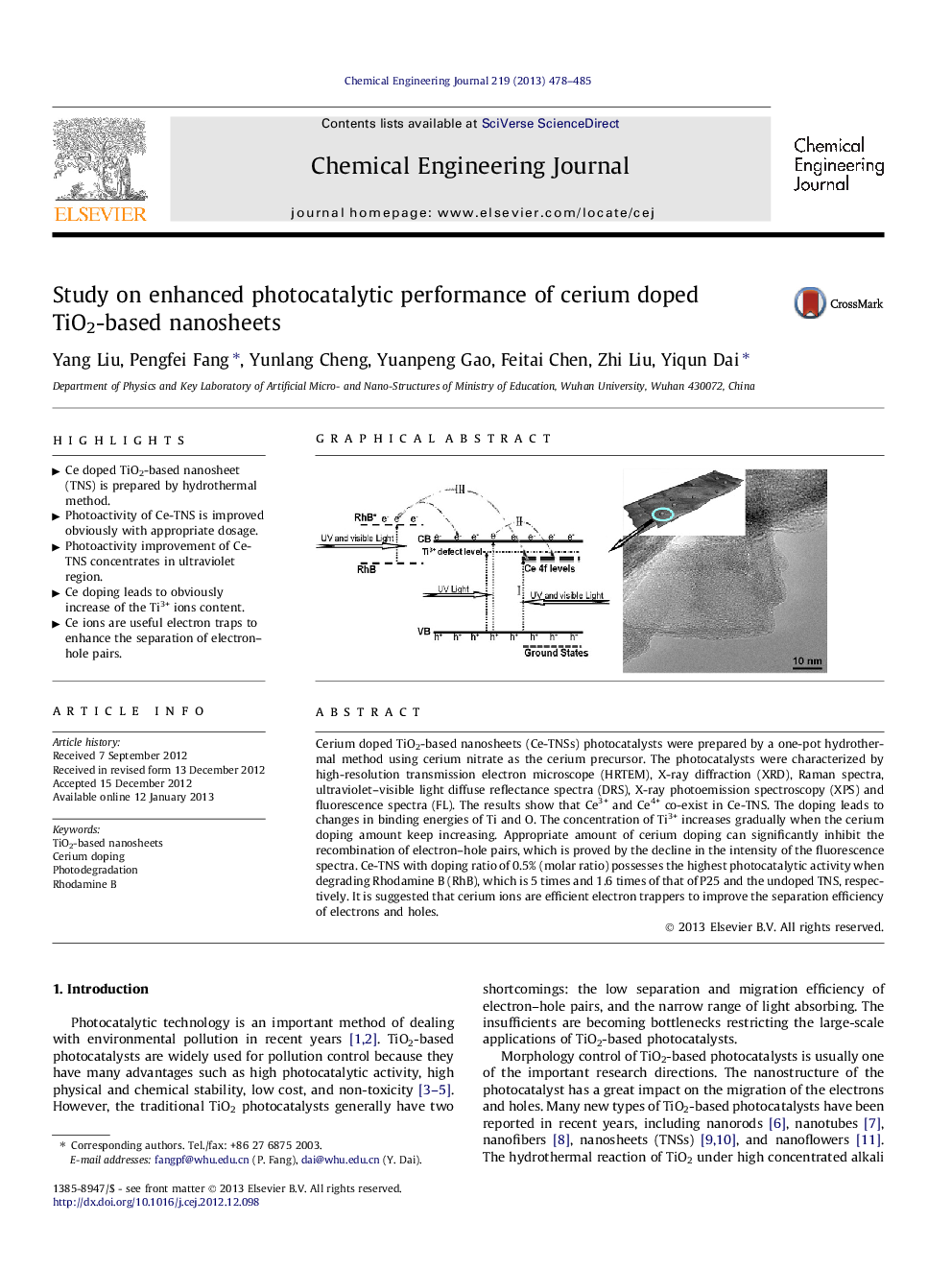| Article ID | Journal | Published Year | Pages | File Type |
|---|---|---|---|---|
| 148908 | Chemical Engineering Journal | 2013 | 8 Pages |
Cerium doped TiO2-based nanosheets (Ce-TNSs) photocatalysts were prepared by a one-pot hydrothermal method using cerium nitrate as the cerium precursor. The photocatalysts were characterized by high-resolution transmission electron microscope (HRTEM), X-ray diffraction (XRD), Raman spectra, ultraviolet–visible light diffuse reflectance spectra (DRS), X-ray photoemission spectroscopy (XPS) and fluorescence spectra (FL). The results show that Ce3+ and Ce4+ co-exist in Ce-TNS. The doping leads to changes in binding energies of Ti and O. The concentration of Ti3+ increases gradually when the cerium doping amount keep increasing. Appropriate amount of cerium doping can significantly inhibit the recombination of electron–hole pairs, which is proved by the decline in the intensity of the fluorescence spectra. Ce-TNS with doping ratio of 0.5% (molar ratio) possesses the highest photocatalytic activity when degrading Rhodamine B (RhB), which is 5 times and 1.6 times of that of P25 and the undoped TNS, respectively. It is suggested that cerium ions are efficient electron trappers to improve the separation efficiency of electrons and holes.
Graphical abstractFigure optionsDownload full-size imageDownload as PowerPoint slideHighlights► Ce doped TiO2-based nanosheet (TNS) is prepared by hydrothermal method. ► Photoactivity of Ce-TNS is improved obviously with appropriate dosage. ► Photoactivity improvement of Ce-TNS concentrates in ultraviolet region. ► Ce doping leads to obviously increase of the Ti3+ ions content. ► Ce ions are useful electron traps to enhance the separation of electron–hole pairs.
